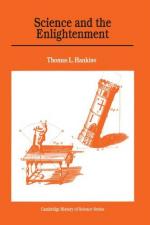
|
| Name: _________________________ | Period: ___________________ |
This quiz consists of 5 multiple choice and 5 short answer questions through Chapter 5, Natural History and Physiology.
Multiple Choice Questions
1. By what name did natural philosophers want to be known as, according to the narrator in Chapter 1?
(a) Men of Honor.
(b) Professors.
(c) Masters.
(d) Men of Letters.
2. When experimentalists studied electricity, the ________ and the ________ were candidates for study because they both appeared to protect themselves electrically.
(a) Komodo dragon / sloth.
(b) Electric eel / sensitive plant.
(c) Great white shark / dolphin.
(d) Leafy seadragon / Hagfish.
3. In Chapter 4, the narrator reveals that Anne Robert Jacques Turgot was a famous French ________.
(a) Chemist.
(b) Physicist.
(c) Philosopher.
(d) Public servant.
4. In the early years of the Enlightenment, the strongest support on the Continent for Newton's philosophy came from ________.
(a) Italy.
(b) Germany.
(c) America.
(d) Holland.
5. Acknowledging the existence of the gaseous states was a prerequisite for explaining combustion, the central problem of the ________, according to the narrator in chapter 4.
(a) Industrial Revolution.
(b) Chemical Revolution.
(c) Scientific Revolution.
(d) French Revolution.
Short Answer Questions
1. What was the name of the priest of the Congregation of the Oratory, who was also a philosopher, mathematician, and member of the French Academy of Sciences?
2. Who stated in 1665 that "Analysis...seems to belong no more to Mathematics than to Physics, Ethics or any other Science"?
3. In Chapter 2, what was the name of the path of a body that is dragged over a resisting horizontal surface by a cord of which one end moves along a straight line found?
4. Joseph Priestly and Henry Cavendish continued to use the term ________ for the action of fire in combustion, in Chapter 4.
5. Who came out in support of vis viva in 1722 and concluded that "what was before only a dispute of words now becomes a dispute about real things"?
|
This section contains 280 words (approx. 1 page at 300 words per page) |

|




